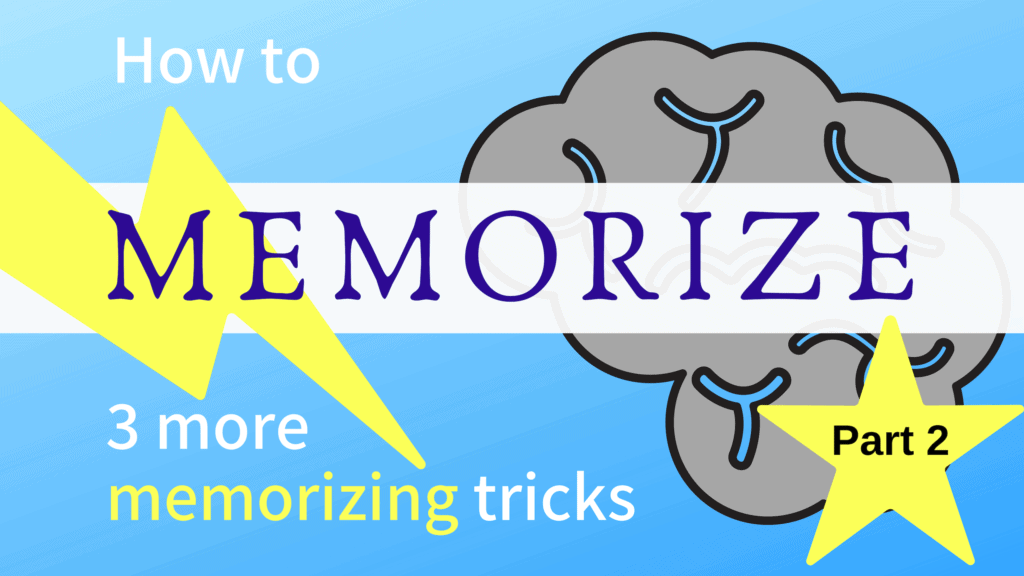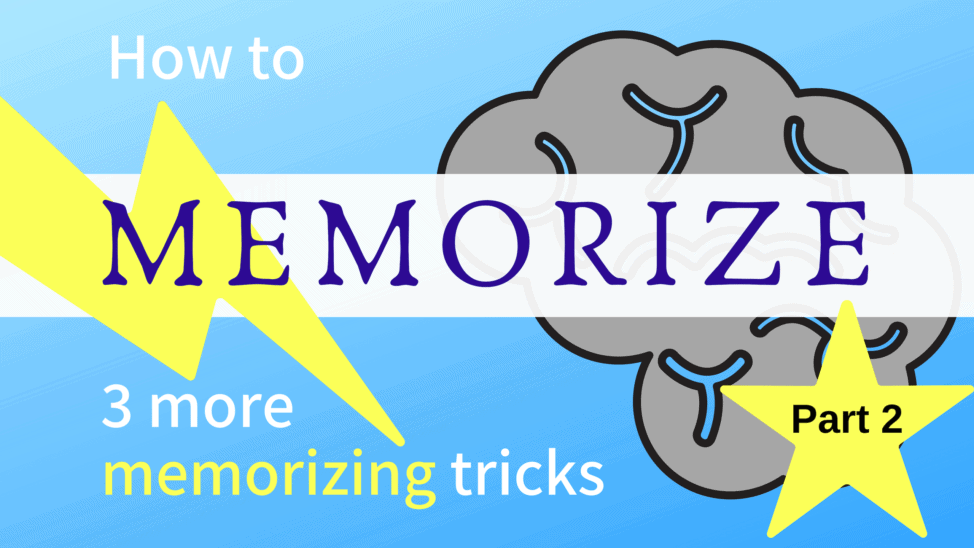
By Katie Azevedo, M.Ed.
In Part 1 of this 2-part study-tip series, I went over 3 hacks for how to memorize information. Check those tips out first. When you’re done, use the 3 additional memorization tricks below to up your memorization game.
Remember, we only learn (or memorize) new information if we are able to move it from our short-term or working memory into our long-term memory.
When we learn something new for the first time, it’s basically floating around our short-term memory until we can make sense of it enough to store it permanently in our long-term mental filing cabinet. This process isn’t that easy.
I hate to be a Debbie-Downer, but there’s no such thing as “miracle memorization” tricks that enable us to learn something once and memorize it forever. Brains don’t work that way.
Instead, there are memorization strategies – like the ones I give you in this 2-part series – that increase the chances of us remembering what we’ve learned. But even these strategies take effort. (Gasp!)
How to memorize information: 3 more memorization tricks
1. Make up a story
Our brains remember information better when the facts are connected in some way, like in a story. If we try to memorize a bunch of random, disconnected facts, then our brains essentially need to work harder to store all those facts separately – and as a result, they are more likely to get lost.
The memorization trick here is to try to connect everything you need to memorize into a story, even if it’s a really lame or ridiculous story that makes no real sense. Your story plot will depend on the type of information you are trying to memorize. Try to have a beginning, middle and end.
2. Use mnemonic devices or acrostics
This memorization trick is great for memorizing information in a particular order, such as the steps in a scientific process, the order of the presidents, the events leading up to a war, etc. A classic example of this strategy in action is using “Roy G. Biv” to remember the colors of the rainbow, or “Please excuse my dear Aunt Sally” to remember the order of operations. Don’t worry if your mnemonic device is silly – in fact, that might help you remember it better.
3. Use images
Most of our memories are stored as images in our mind. (Read that again. isn’t that INSANE?!) Our brains love images. Think about it … when you read the words purple flower, aren’t you imagining a PICTURE of a purple flower rather than the scent or sound of it (do purple flowers make sounds?)? If you read the word sunset, can’t you picture a golden sunset? See? Images! Everywhere!
When you’re trying to memorize new information, put the material into image form. I know this isn’t always possible, but you’d be surprised at what a Google Image search will yield for just about anything you want to learn. Once you store the information as an image in your mind, you’ll be able to recall it better than if you were to try to memorize just the language of the information.
Final notes on memorization tricks
As I’ve said already, there are no magic memorization tricks that will enable you to memorize a hundred numbers in 10 minutes (who would even want to do that?), or all the states and their capitals in an hour. But these 3 tips here, and the ones from Part 1, will help you move what you’re learning into your long-term memory faster than you might realize.

